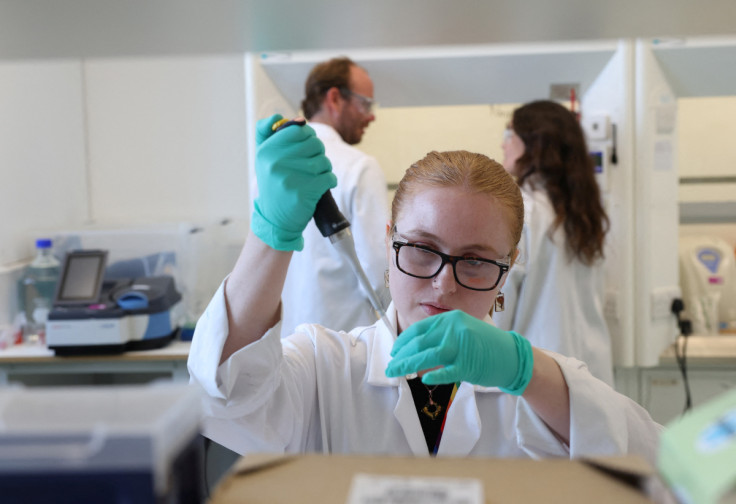Groundbreaking Research Enhances Cataract Surgery with Computational Eye Models
In a study published in the Journal of Cataracts & Refractive Surgery, researchers have harnessed the power of computational eye models to revolutionise the way cataract patients and surgeons approach corrective lens choices.

In a pioneering study published in the Journal of Cataracts & Refractive Surgery, researchers from the University of Rochester have unveiled a cutting-edge approach to revolutionise the selection of intraocular lenses (IOLs) for patients who have previously undergone LASIK eye surgery and later develop cataracts.
This breakthrough research employs computational simulations to create personalised eye models, offering valuable insights into selecting the most appropriate IOLs for optimal vision restoration. The implications of this technology extend beyond cataract treatment, promising advancements in addressing various major eye conditions.
LASIK (Laser-Assisted In Situ Keratomileusis) eye surgery has been a transformative procedure for millions worldwide since its commercial debut in 1989. It has provided a lifeline to individuals with nearsightedness, farsightedness and astigmatism, significantly reducing their dependence on eyeglasses and contact lenses.
However, as these LASIK patients age, some may develop cataracts, a common age-related vision condition characterised by the clouding of the eye's natural lens. When cataracts progress to the point where they hinder vision, cataract surgery becomes necessary to replace the cloudy lens with an artificial IOL.
The challenge arises in selecting the most suitable IOL for post-LASIK patients. Traditionally, surgeons have relied on pre-operative data, mainly the cornea's length and curvature, to guide their choice.
However, this approach fails to account for the intricate three-dimensional topography of the cornea and crystalline lens within the eye, where the IOL is implanted. To address this limitation, researchers at the University of Rochester embarked on a groundbreaking journey.
Led by Susana Marcos, the David R. Williams Director of the Center for Visual Science and a Nicholas George Professor of Optics and Ophthalmology at Rochester, the research team set out to create comprehensive computational eye models. These models incorporate the specific anatomical information of post-LASIK patients' eyes.
The study's co-author, Marcos, explained: "Currently the only pre-operative data used to select the lens is essentially the length and curvature of the cornea. This new technology allows us to reconstruct the eye in three dimensions, providing us the entire topography of the cornea and crystalline lens, where the intraocular lens is implanted."
"When you have all this three-dimensional information, you're in a much better position to select the lens that will produce the best image at the retinal plane," Marcus continued.
The computational models serve as a game-changer in cataract surgery. They offer surgeons invaluable guidance on the expected optical quality post-operation, ensuring a more precise and personalised approach. This development marks a significant leap forward in enhancing the quality of life for individuals facing cataract surgery after LASIK.
The University of Rochester's research extends beyond computational eye models. The team is now undertaking a more extensive study, quantifying eye images in three dimensions using optical coherence tomography (OCT) quantification tools developed during their research.
By harnessing machine-learning algorithms, they aim to establish relationships between pre- and post-operative data, identifying parameters crucial for achieving the best outcomes for patients.
OCT has been an instrumental technology in ophthalmology, providing high-resolution cross-sectional images of the eye's internal structures. The application of OCT in this context highlights its potential to reshape the landscape of cataract surgery and other eye-related procedures.
One of the most exciting developments arising from this research is the technology that enables patients to visualise the impact of different lens options on their vision.
As Marcos explained: "What we see is not strictly the image that is projected on the retina. There is all the visual processing and perception that comes in. When surgeons are planning the surgery, it is very difficult for them to convey to the patients how they are going to see. A computational, personalised eye model tells which lens is the best fit for the patient's eye anatomy, but patients want to see for themselves."
To meet this need, the research team has employed an optical bench, leveraging technology initially developed for astronomy. This includes adaptive optics mirrors and spatial light modulators, allowing them to manipulate the optics of the eye in a manner simulating the impact of an IOL. This approach empowers both patients and surgeons to gain a realistic preview of post-operative vision.
Furthermore, the researchers have developed a commercial headset version of this instrumentation, known as SimVis Gekko, which offers patients an immersive experience, allowing them to perceive the world as if they had already undergone the surgery. This patient-centric approach not only enhances communication between surgeons and patients but also enables individuals to make more informed decisions regarding their treatment options.
While the primary focus of this research is on improving cataract surgery outcomes for post-LASIK patients, the applications extend to addressing a range of significant eye conditions.
Beyond cataracts, the research team is exploring the potential of their methods in addressing presbyopia and myopia, two common vision issues affecting people of all ages.
The quest for personalised, data-driven solutions in eye care is advancing rapidly, promising a brighter future for individuals seeking to improve their vision and overall quality of life.
© Copyright IBTimes 2025. All rights reserved.






















